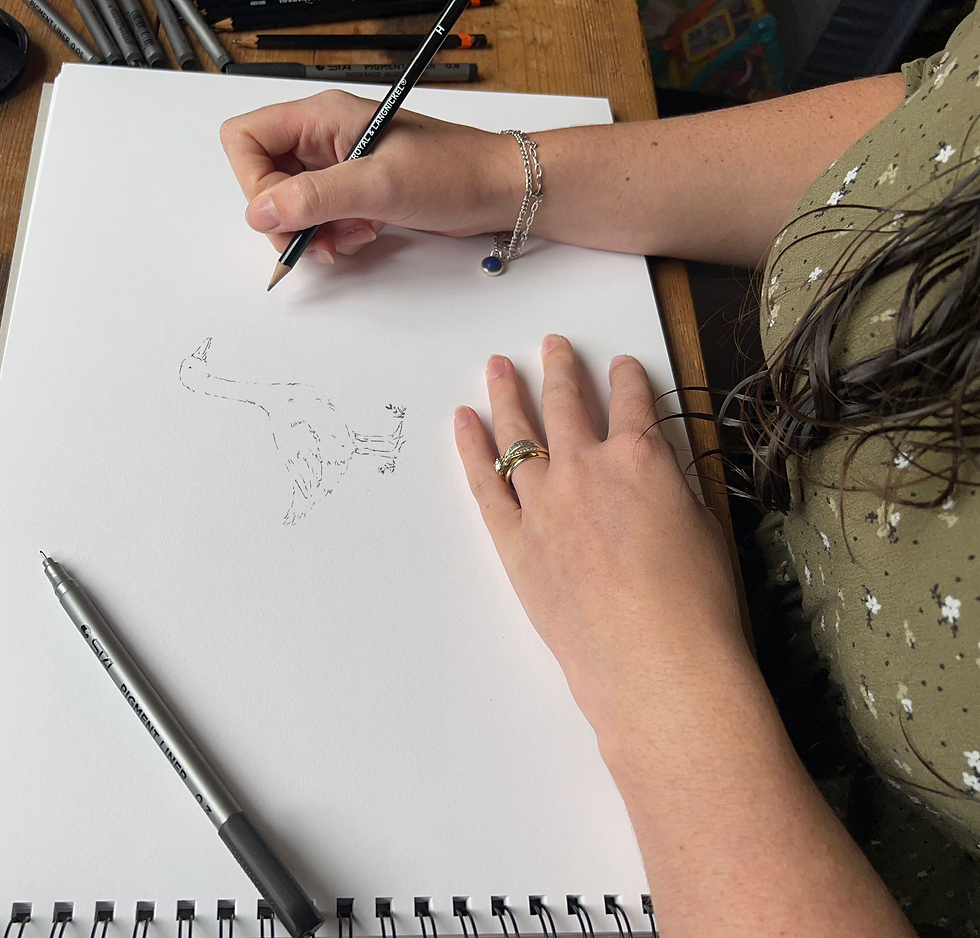Crafting a Stunning Unique Art Portfolio
- Daniella Kaye
- Oct 7
- 4 min read
Creating an art portfolio feels a bit like telling a story about yourself without words. It’s your chance to show the world your passion, your style, and your journey as an artist. Whether you’re just starting out or looking to refresh your collection, building a portfolio that truly reflects your love for nature, wildlife, and the countryside can be both exciting and a little daunting. But don’t worry - I’m here to guide you through the process with warmth, practical tips, and a sprinkle of inspiration.
Starting with Art Portfolio Ideas for Beginners
When I first began assembling my portfolio, I remember feeling overwhelmed by all the choices. What should I include? How do I organise it? The key is to start simple and focus on what makes your work special. Here are some beginner-friendly ideas to get you going:
Choose a theme: Since you love wildlife, dogs, and country living, pick pieces that highlight these subjects. This creates a cohesive story.
Select your best work: Quality over quantity. Aim for 10-15 pieces that showcase your skills and style.
Mix mediums and styles: If you paint watercolours but also sketch, include both. It shows versatility.
Tell a story with your layout: Arrange your pieces in a way that flows naturally, like a walk through the countryside or a day with your favourite dog.
Remember, your portfolio is a reflection of you. Don’t be afraid to let your personality shine through.

Organising Your Portfolio for Maximum Impact
Once you have your pieces selected, it’s time to organise them thoughtfully. Think of your portfolio as a journey you’re inviting your viewer to take. Here’s how I like to approach it:
Start strong: Lead with your most striking piece. It’s like the front door to your artistic world.
Create a rhythm: Alternate between detailed close-ups and broader landscapes or scenes. This keeps the viewer engaged.
Group similar works: For example, cluster your dog portraits together, then move to wildlife sketches.
Include a variety of sizes: Mix small, intimate pieces with larger, bold ones.
End with a memorable piece: Leave your audience with something that lingers in their mind.
If you’re working digitally, use clean, simple layouts with plenty of white space. For physical portfolios, invest in good-quality sleeves or folders to protect your work.
Showcasing Your Unique Art Portfolio
Now, here’s a little secret I’ve learned: your portfolio isn’t just about the art itself. It’s also about how you present it. A unique art portfolio can set you apart in a sea of artists. Here are some tips to make yours stand out:
Personalise your cover: Use a hand-painted or printed cover that reflects your style.
Add brief descriptions: Share a sentence or two about each piece - what inspired it, the story behind it, or the techniques used.
Include your artist statement: This is your chance to speak directly to your audience about your passion for nature and countryside life.
Use high-quality images: Whether digital or printed, clear, vibrant photos make a huge difference.
Consider custom packaging: If you’re sending your portfolio to galleries or clients, a beautifully wrapped package adds a touch of charm.
These little touches show you care about your work and your audience, making your portfolio feel like a warm invitation into your creative world.

Tips for Photographing and Scanning Your Artwork
Capturing your artwork accurately is crucial, especially if you’re sharing your portfolio online or sending digital copies. Here’s what I’ve found helpful:
Use natural light: Shoot near a window on a bright but overcast day to avoid harsh shadows.
Keep the camera parallel: Position your camera or phone directly above the artwork to prevent distortion.
Use a tripod or steady surface: This keeps your images sharp.
Edit lightly: Adjust brightness and contrast to match the original piece but avoid over-editing.
Scan for detail: For smaller works, a scanner can capture fine details better than a camera.
Taking the time to get great images shows respect for your art and helps viewers appreciate your work fully.
Bringing Your Portfolio to Life with Personal Touches
Finally, don’t forget to add those personal touches that make your portfolio truly yours. Here are some ideas I love:
Include sketches and process shots: People enjoy seeing how a piece evolves.
Add a small, handwritten note or signature: It feels intimate and authentic.
Incorporate natural elements: A pressed leaf or a small dried flower tucked inside can evoke the countryside spirit.
Offer customisation options: If you create personalised pieces, mention this in your portfolio.
These details create a cozy, inviting experience that resonates with anyone who shares your love for nature and animals.
I hope these tips inspire you to craft a portfolio that not only showcases your talent but also your heart. Remember, your art is a gift - and your portfolio is the beautifully wrapped present you offer to the world. Happy creating!






Comments